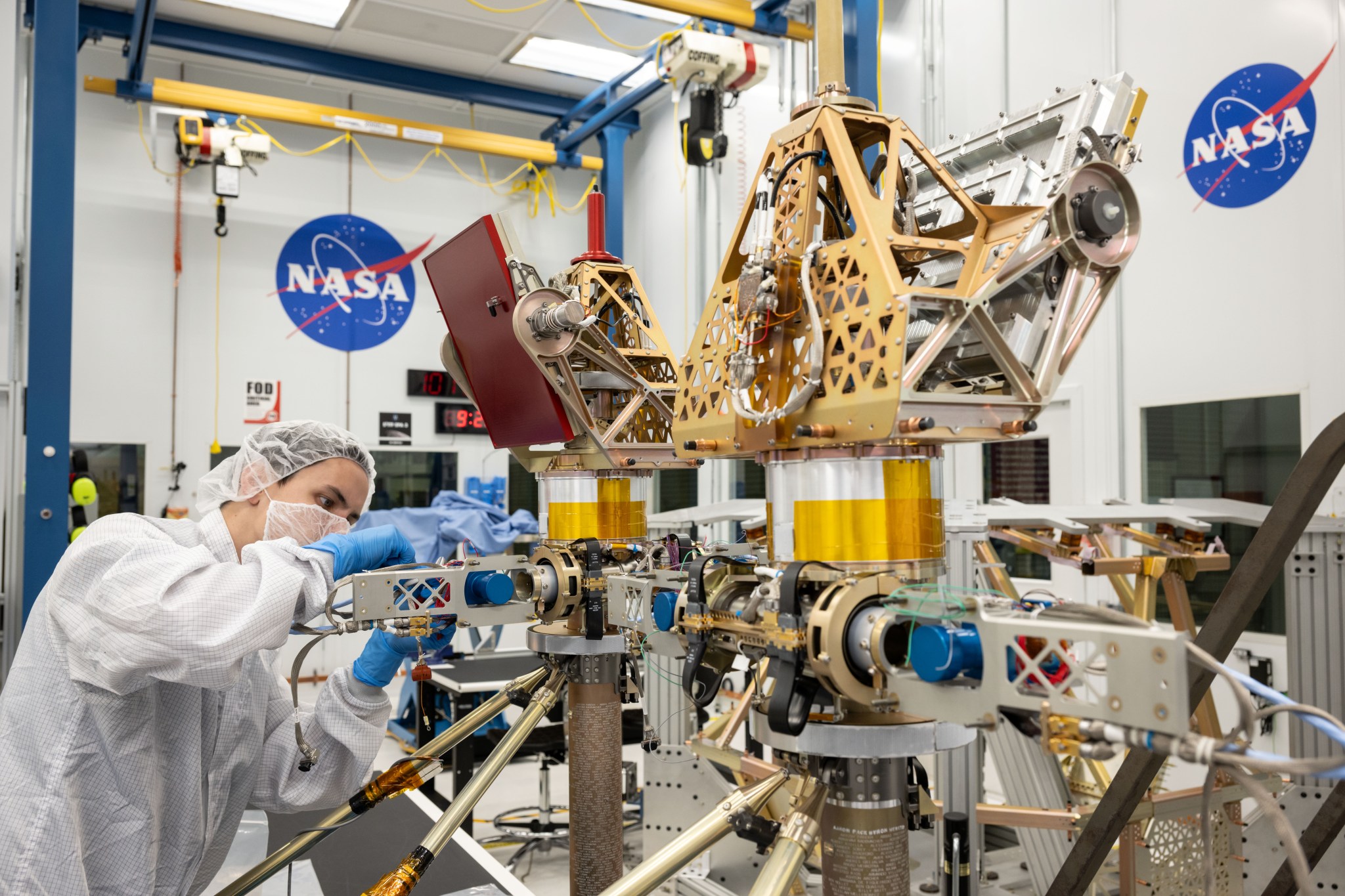Lee esta nota de prensa en español aquí.
The public now has a live, front row seat to see NASA’s first robotic Moon rover take shape in the Surface Segment Integration and Testing Facility clean room at the agency’s Johnson Space Center in Houston. Members of VIPER — short for the Volatiles Investigating Polar Exploration Rover — and the Office of Communications at NASA’s Ames Research Center in California’s Silicon Valley, will host watch parties and answer questions from the public about the mission in both English and Spanish.
These webchats and watch parties will occur as the rover is assembled and tested, approximately once a month from November 2023 through January 2024 . In late 2024, VIPER will embark on a mission to the lunar South Pole to trek into permanently shadowed areas and unravel the mysteries of the Moon’s water.
“We’re really excited for people to see the VIPER rover hardware coming together,” said Daniel Andrews, the VIPER mission project manager at NASA Ames. “All of our planning and ideas are now going into building this first-of-its-kind Moon rover.”
Individual components such as the rover’s science instruments, lights, and wheels, have already been assembled and tested. Once delivered to the testing facility, other components will be integrated together to become the approximately 1,000-pound VIPER.
Months of final assembly and testing lie ahead before VIPER is ready to ship to the Astrobotic Payload Processing Facility in Florida in mid-2024. VIPER’s lunar landing atop Mons Mouton is scheduled for late-2024, where it will get a close-up view of the lunar surface and measure the location and concentration of water ice and other resources. Using its drill and three science instruments, researchers will gain a better understanding of how frozen water and other volatiles are distributed on the Moon, their cosmic origin, and what has kept them preserved in the lunar soil for billions of years. VIPER will also inform future Artemis missions by helping to characterize the lunar environment and help determine locations where water and other resources could be harvested to sustain humans for extended missions.
NASA Ames manages the VIPER mission and also leads the mission’s science, systems engineering, real-time rover surface operations, and the rover’s flight software. The rover vehicle is being designed and built by NASA’s Johnson Space Center in Houston, while the instruments are provided by Ames, Kennedy Space Center in Florida and commercial partner Honeybee Robotics in Altadena, California. The spacecraft, lander, and launch vehicle that will deliver VIPER to the surface of the Moon will be provided through NASA’s Commercial Lunar Payload Services initiative, delivering science and technology payloads to and near the Moon.
For more information about VIPER visit:





























